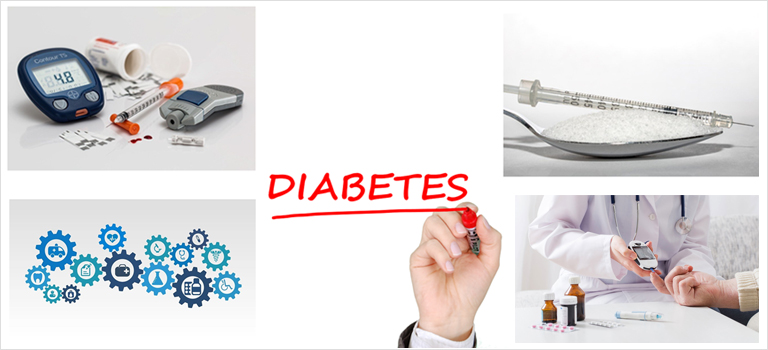Whether you have dealt with Diabetes for years or are brand new to the diagnosis, learning all the lingo can be stressful. A simple internet search will bring back a sea of terminology and articles filled with varying opinions about proper diet, management techniques and the best monitoring devices to use to control the disease.
One area of diabetes management that has received varying reports is whether to use Continuous Glucose Monitors (CGM), Blood Glucose Monitors (BGM) or some combination of the two. Before you decide, it is important to understand a few important terms and how they differ so let’s break it down:
Blood Glucose Monitors Defined
A Blood Glucose Monitor or Meter tests the concentration of glucose in the blood through a fingerstick to draw blood. Then uses a test strip that interacts with a digital meter to identify blood glucose levels. Blood Glucose Monitors began to appear back in the 70s with “the first easy-to-use home glucose meter arriving on the scene in 1981 with the Glucometer and a few others.”1 It is important to note that Blood Glucose Monitors measure glucose levels at a particular moment in time and focuses on a single number.
Continuous Glucose Monitors Defined
A Continuous Glucose Monitor takes glucose readings on set intervals with a small electrode placed under the skin which is held in place by an adhesive. A transmitter attached to the electrode sends data to a separate unit allowing a patient to record and access valuable information and trends on a continual 24/7 basis.
Deciding Factors and Benefits
Advances in technology have definitely caused one system to surpass the other. When comparing the two, a good analogy to help paint a picture is to compare a flip phone to a smartphone. They both achieve similar goals, but one does it with more speed and more elaborate features. There are still many people out there who rely on flip phones and are comfortable with them and don’t want to adapt to change and advances in technology. For these reasons, it’s important to understand the differences between Blood Glucose Monitors and Continuous Glucose Monitors to decide what is right for you or what’s right for your patients if you’re a healthcare provider.
Benefits of using Continuous Glucose Monitoring Devices
- 1. Ease of Use – CGMs eliminate the need for inconvenient and painful fingersticks.
- 2. 24/7 Monitoring – Continual monitoring keeps patients safe and allows them to monitor levels anytime and anywhere and sends an alert if levels are too high or too low.
- 3. Data Collection – CGMs collect information and identify patterns that can be shared with healthcare professionals and caregivers to help avoid dangerous situations.
- 4. CGMs are more advanced, user-friendly and discreet and allow users to maintain an active and healthy lifestyle.
Benefits of using a Blood Glucose Monitoring System
- 1. Tried and True – Blood Glucose Monitors were here first and are a trusted method of monitoring.
- 2. Accessibility – Blood Glucose Monitors can be found in local drugstores often without a prescription and are an affordable method in managing Diabetes.
- 3. Compatibility – The reliability of BGMs make them a good source to confirm the results and serve as a double-check to Continuous Glucose Monitors.
- 4. Global Usage – Countries that have not achieved advances in technology can benefit from the use of Blood Glucose Monitors to manage Diabetes for a population that needs assistance.
Choosing the Right System
As technology continues to edge out traditional systems, it’s becoming increasingly apparent that Continuous Glucose Monitors will be the future of Diabetes Management, but how do you know which system to choose? There is so much information in the market today and the messages can get cloudy, but one system stands out in the crowd and that is the FreeStyle Libre. The FreeStyle Libre is the longest lasting self-applied sensor on the market today. It captures 14 days of data and stores the information for up to 90 days. There is also a downloadable app that allows patients to get readings on their smart device anytime, anywhere, and it’s discreet. A sensor is worn on the back of the upper arm and measures glucose every minute. Patients simply swipe a handheld reader over the sensor for a one-second scan to receive data. Each scan provides a current glucose reading, a trend arrow and an 8-hour history. Patients can easily track daily patterns, ranges and targets and can even receive alerts when they are trending high or low. Continuous Glucose monitors have revolutionized Diabetes Management control and will continue to exist far into the future.
Knowing when to ask for HELP
Learning the facts and deciphering the lingo can be tricky, but it doesn’t have to be! We hope that we have armed you with the facts necessary to make the decision that is right for you. If you still have questions and need more information, Quest Health Solutions is here for you! We’re one of the leading suppliers of Continuous Glucose Monitoring Systems and currently licensed in 48 states. Our number one priority is the best interests of our patients, and we strive to be a one-stop shop for all CGM needs. We also offer free, CGM Fulfillment Solutions to Diabetes Care Specialists and take great pride in providing the tools, supplies, services and knowledge to educate patients and healthcare professionals. For more information, contact us at 1-877-888-7050 Ext. 1011 or email ben@questhealthsolutions.com .
1.(2020) Diabetes In Control. Available at http://www.diabetesincontrol.com/is-there-a-future-for-bgm/ accessed on 29 September 2020.

